If you drink coffee, you’ve got grounds. Probably more than you even realize. And that’s good news considering the many, many uses for coffee grounds in the garden! Even if you’re not a coffee drinker, it’s not hard to source them. Once you realize all that you can do with coffee grounds in your garden, you might want to do just that.
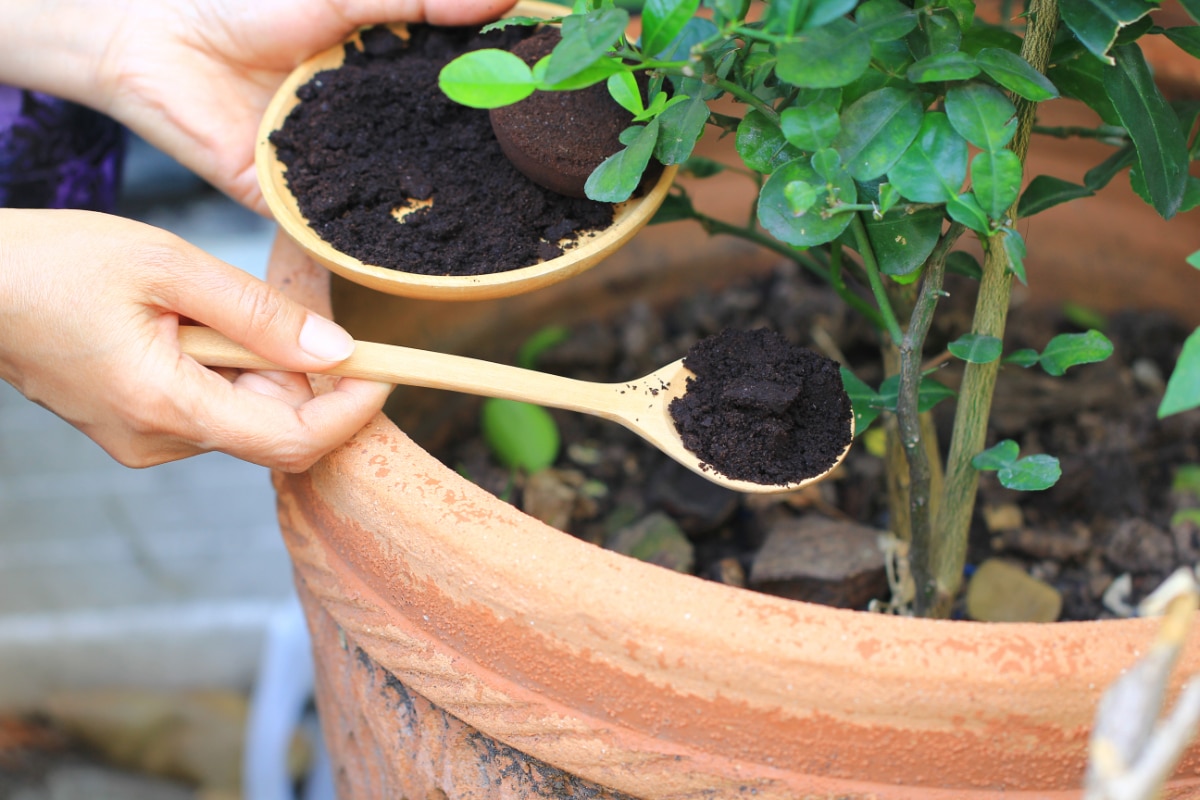
How can coffee grounds be used for gardening? Use them for:
Jump to:
- Coffee in the Compost
- Use Coffee Grounds as Garden Plant Fertilizer
- How to Use Coffee Grounds as a Soil Amendment
- Coffee as a Peat Moss Substitute
- Soil Mix for Container Gardening
- Mushroom Growing Substrate
- Worm Food
- Increase Soil Acidity
- Influence Hydrangea Color
- Weed Control
- Coffee Ground Pest Control
- Fighting Bacterial and Fungal Disease
- Use Coffee to Space Small Seeds like Carrots
- Coffee Grounds to Keep Cut Flowers Fresh
- Grow Greener Grass with Coffee Grounds
- Garden Furniture Scratch Repair
- Cleaning Garden Pots and Tools with Coffee
- Coffee Hand and Skin Cleaner and Odor Eliminator
- A Few Tips and Cautions When Using Coffee Grounds in the Garden
- Sourcing Coffee Grounds for Your Garden
Coffee in the Compost
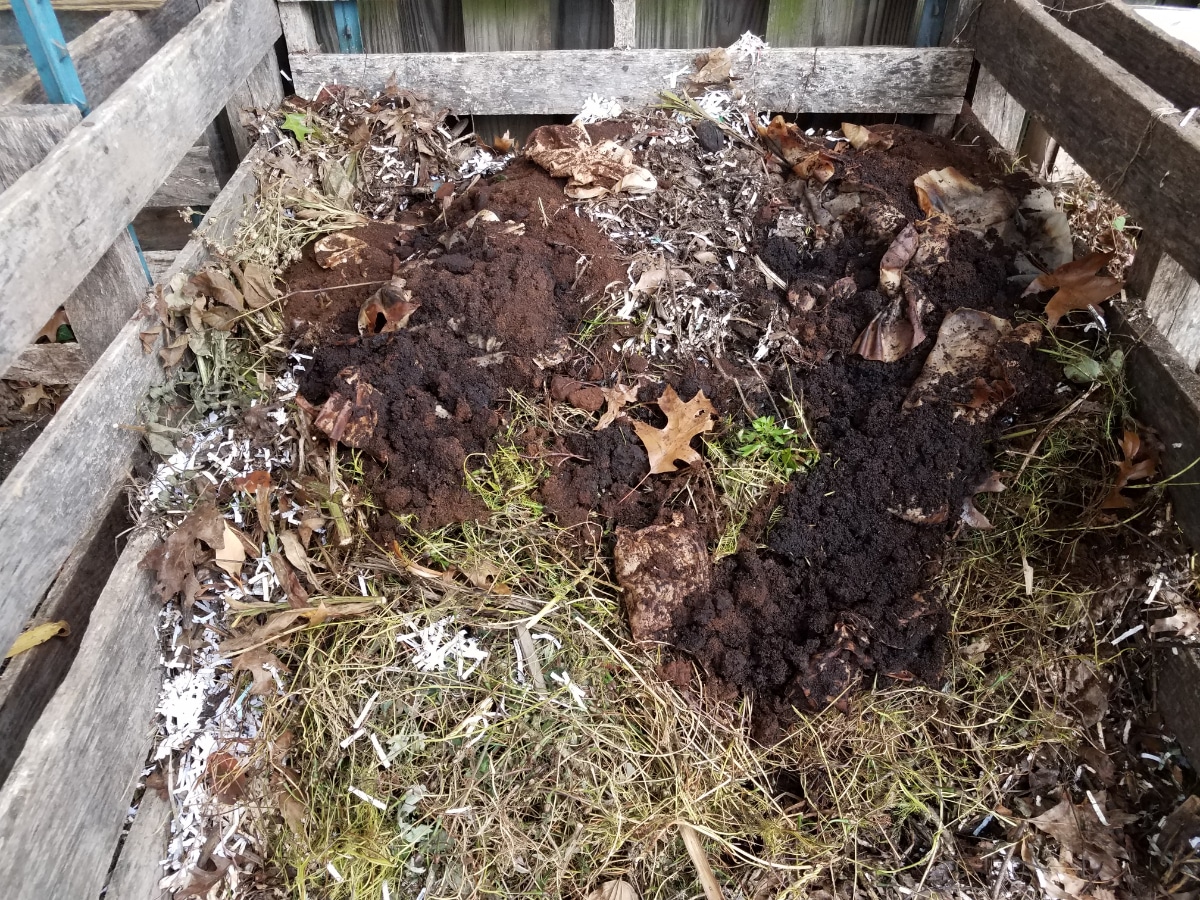
Compost leads the list of ways to use coffee grounds in the garden. Used grounds, and used paper coffee filters, too, make excellent compost materials. Composting is, in fact, the best and safest way to use coffee grounds in the garden. Some plants can be sensitive to coffee grounds when applied directly, but that sensitivity goes away as the grounds decompose in the compost pile.
Coffee grounds are a “green” compost material. They are a valuable source of nitrogen (2% according to the U.S. University of Oregon). They also provide calcium, magnesium, potassium, and trace minerals.
When using coffee grounds as a compost material, the grounds should make up no more than 20% of the volume of your compost pile so that they do not adversely affect the balance of beneficial microbes. An easy way to keep track of this is by mixing the grounds with a “brown” material whenever you add them.
Mix five parts of brown material with one part coffee grounds (ripped up paper filters can count as some of your brown material). Sawdust is an easy brown to keep on hand and mix with your grounds. Then just add the mixture to your bin. Some people also like to add a cup of ash or lime to the bin periodically to deal with potential acid imbalance, though this is not a great concern because the acid in coffee grounds is washed out with brewing, and used grounds are very close to pH neutral.
Use Coffee Grounds as Garden Plant Fertilizer
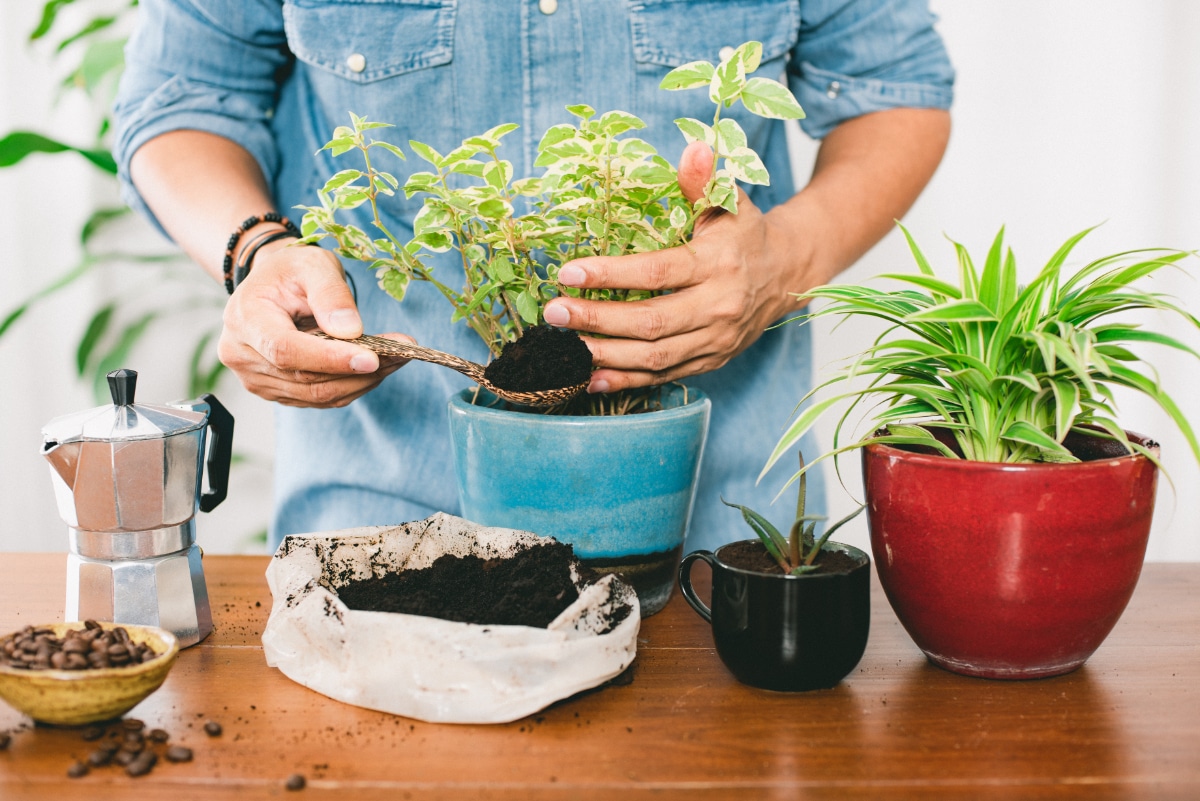
That 2% nitrogen by volume and additional minerals makes coffee grounds a very good garden fertilizer—one that is cheap and easy to apply. Roses are said to love a sprinkling of coffee grounds around the base, giving them a good nitrogen fix.
There are a few ways to apply coffee grounds as a fertilizer.
Coffee grounds can simply be sprinkled over the top of garden soil and left to eventually work in. Just be sure you don’t apply them too thickly because the grounds clump together and form a water-resistant shell.
You can also broadcast coffee grounds over the soil’s surface before tilling, or broadcast them and then work them into the ground with a rake or hoe. Work the grounds in at least two inches.
A “tea” made from coffee grounds can be used as either a liquid fertilizer or a foliar spray.
To make the tea, stir two cups of used coffee grounds into a five-gallon pail of water. Let it sit and steep overnight. Strain the grounds out the next day. To use the tea as a liquid fertilizer, pour it at the base of plants, or use it to water container garden plants.
To use as a foliar spray, pour the tea into a spray bottle and spray leaves and stems directly. Foliar sprays have faster uptake than fertilizers applied to soils, so can be a quick pick-me-up for weak plants. It is always best to apply foliar sprays when the sun is not at its strongest and a few hours before nightfall so that the plants do not stay too wet for too long during the moist overnight period.
How to Use Coffee Grounds as a Soil Amendment
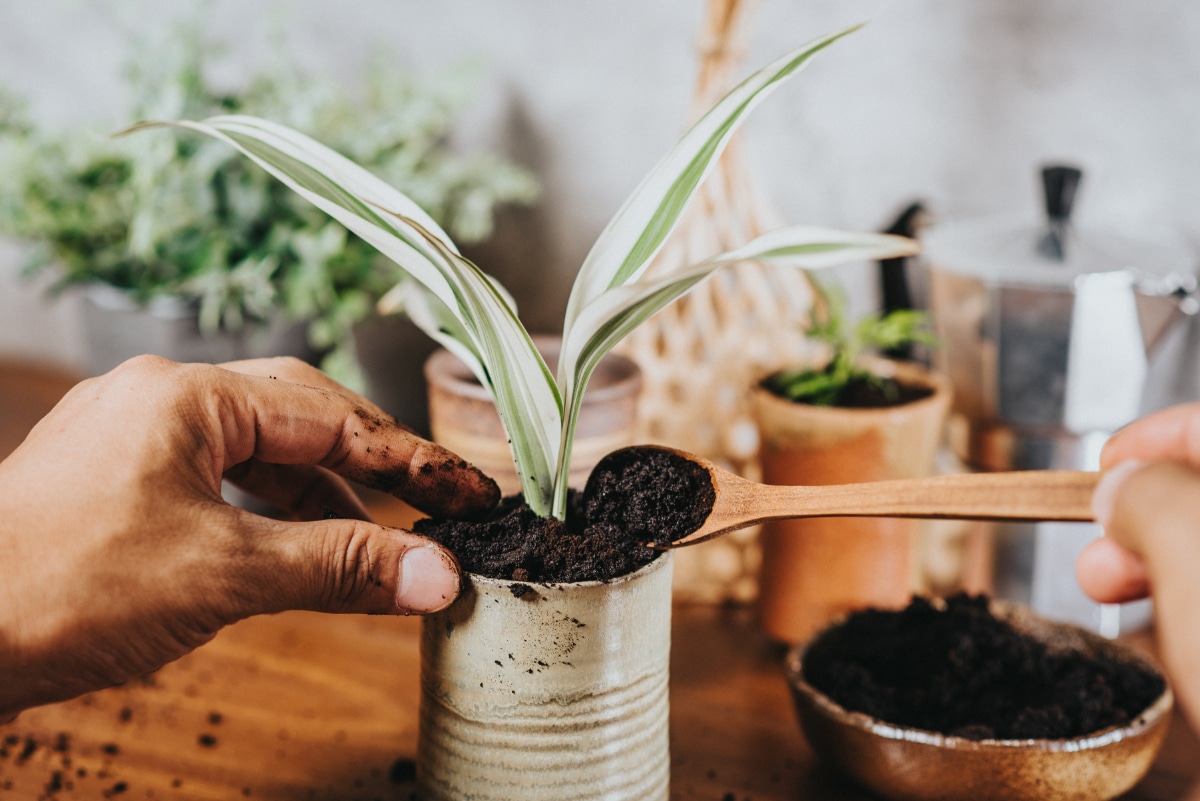
Coffee grounds work well as a soil amendment to improve the structure of your garden soil. They provide organic material for building up poor soils such as sandy or clay soils. They are a good amendment to use with materials like sawdust, which are also good for amending soil structure because they provide nitrogen that the sawdust needs as it breaks down.
Coffee grounds are good at absorbing water, so they help with moisture retention. As they release that moisture back into the soil, they help to loosen and aerate the soil, and this also helps to improve soil drainage. They’re attractive to earthworms, too, and those helpful creatures also enhance soil aeration, health, and drainage.
Coffee as a Peat Moss Substitute
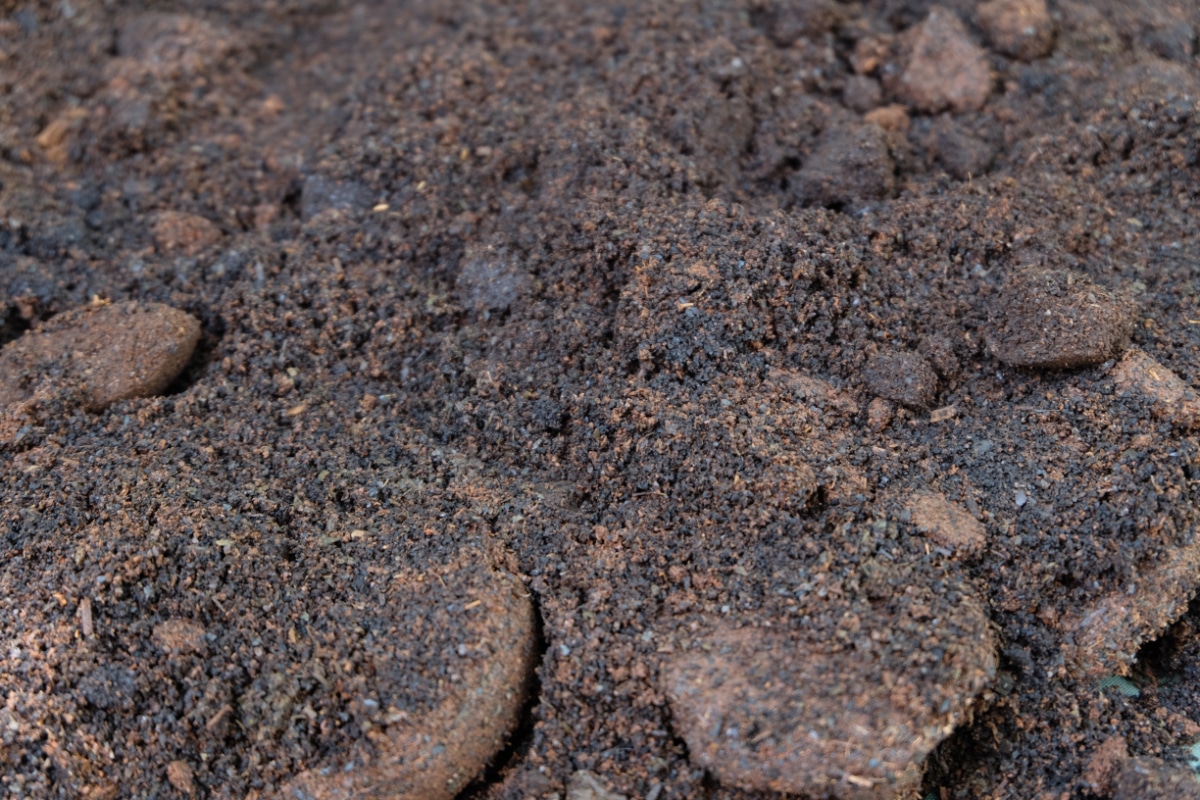
Environmental concerns connected to the harvesting of peat moss have many gardeners looking for a different solution. It’s tough to replace a natural product as useful as peat moss, but coffee grounds are one option. Properly prepared, you can use composted coffee grounds in place of peat moss in planting and potting mixes—anywhere you would usually use peat, used the same way.
The key to success here is to compost the peat moss first. For best results, dedicate a compost pile for peat replacement. Make the material mix 4:1 brown material (sawdust or shredded paper recommended) to coffee grounds. Compost completely before use.
Soil Mix for Container Gardening
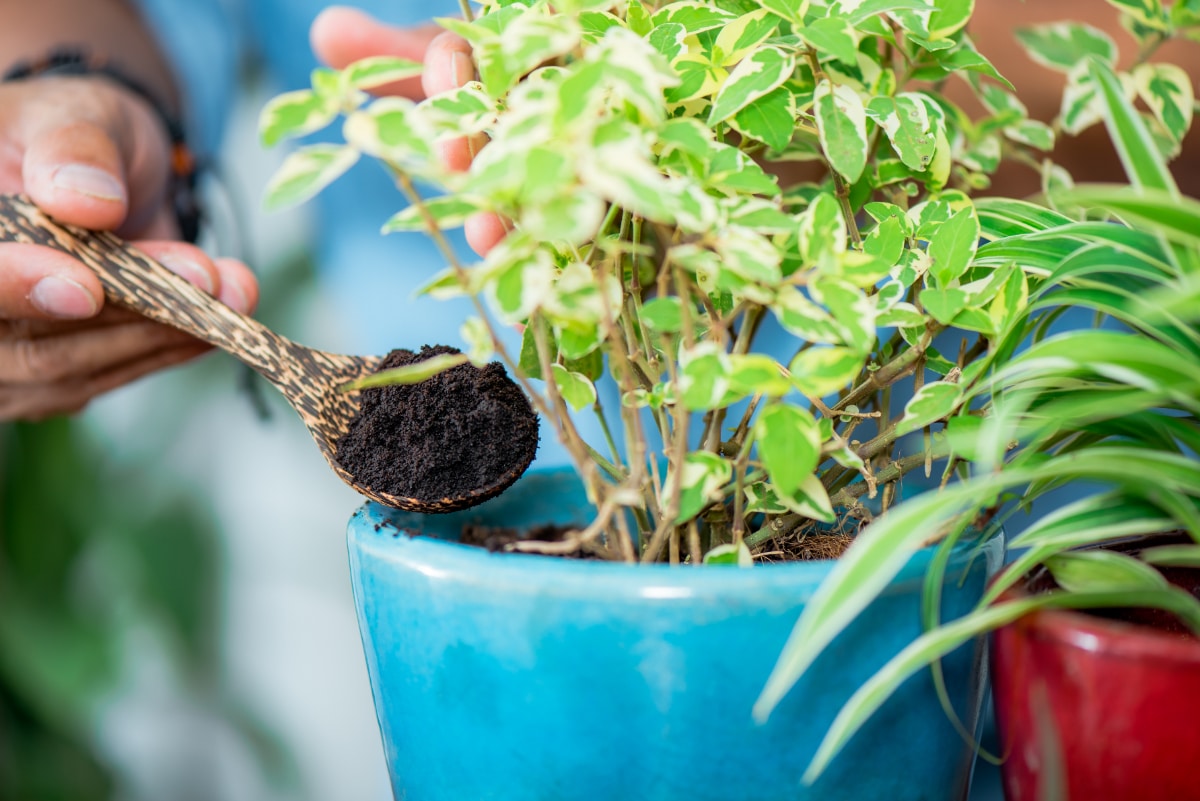
Mix used coffee grounds and topsoil to create a cheap (or free) soil mix for container gardening. This can help you control costs and stay on budget.
Mix coffee grounds in equal parts in a 1:1 ratio of grounds to topsoil. This will obviously require a large amount of grounds, so be sure to see the tips for sourcing coffee grounds at the end—large quantities are not so difficult to obtain!
You can also use this 1:1 mixture as a way to broadcast coffee grounds to treat or amend garden soil without having them clump together and form an air and water barrier.
Mushroom Growing Substrate
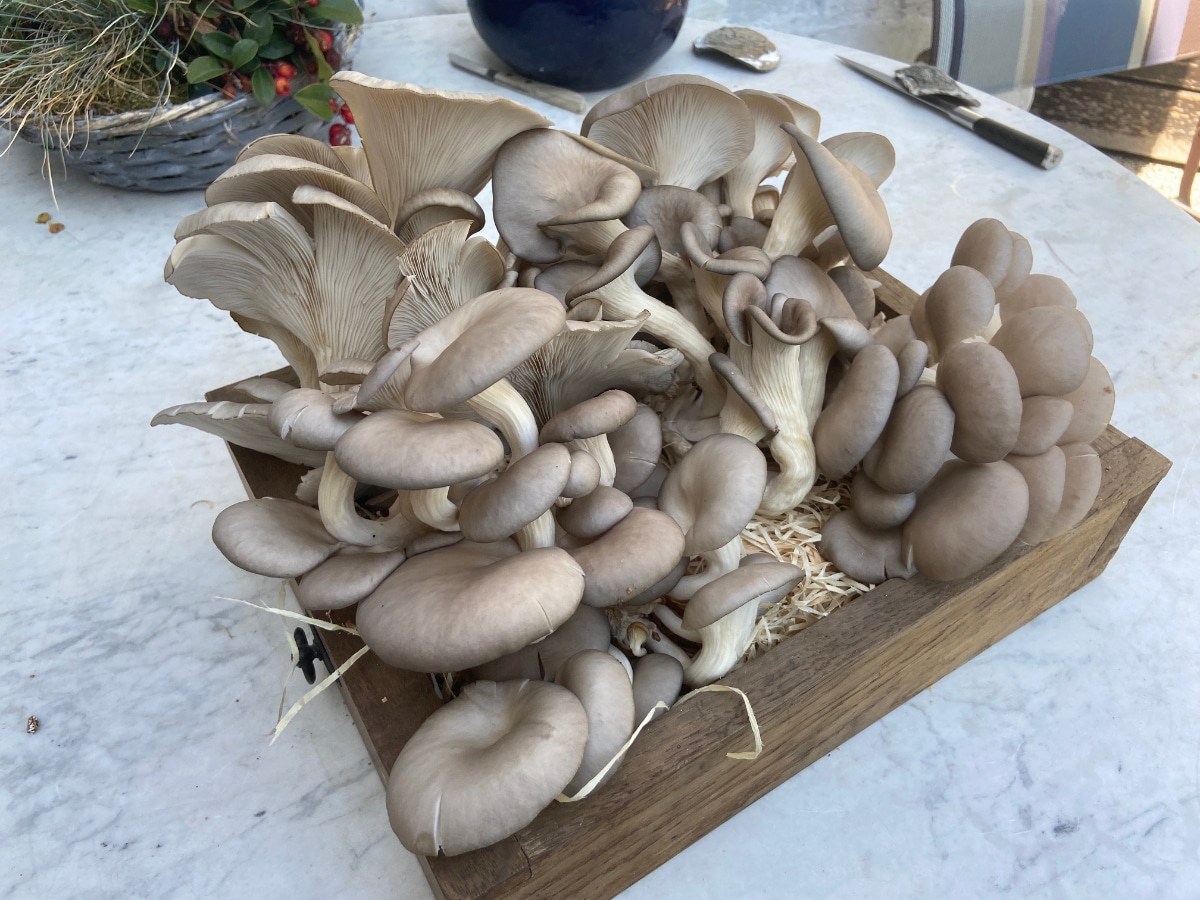
Coffee grounds also make a great substrate for growing mushrooms at home! All those nutrients make an ideal medium for DIY mushroom kits. The used grounds are already sterilized from brewing, so as long as they’ve been well-stored before use (such as bagged in a freezer or dried and sealed) they’re good to go!
You will need:
- 5 pounds used coffee grounds
- 1 pound sawdust (sterilize by pouring boiling water into the sawdust and let sit overnight, then drain before use)
- Mushroom spore
Moisten but do not soak the coffee grounds.
Mix the spore with the sterilized, drained sawdust.
Mix the spore and sawdust moisture into the coffee grounds until evenly distributed. Be sure your hands are clean to avoid contamination.
Fill a large plastic zipper bag (or bags) three-quarters full with the mixture.
Cut four one-inch air holes above the soil line.
Place the bag in a warm space, out of direct light, and spray once per day or as needed to maintain moisture.
In two to four weeks, you should see a webbing of white mycelium throughout the bag, which will eventually become the mushrooms.
Move the bag to a space where there is indirect light and air movement. Harvest mushrooms when ready.
Worm Food
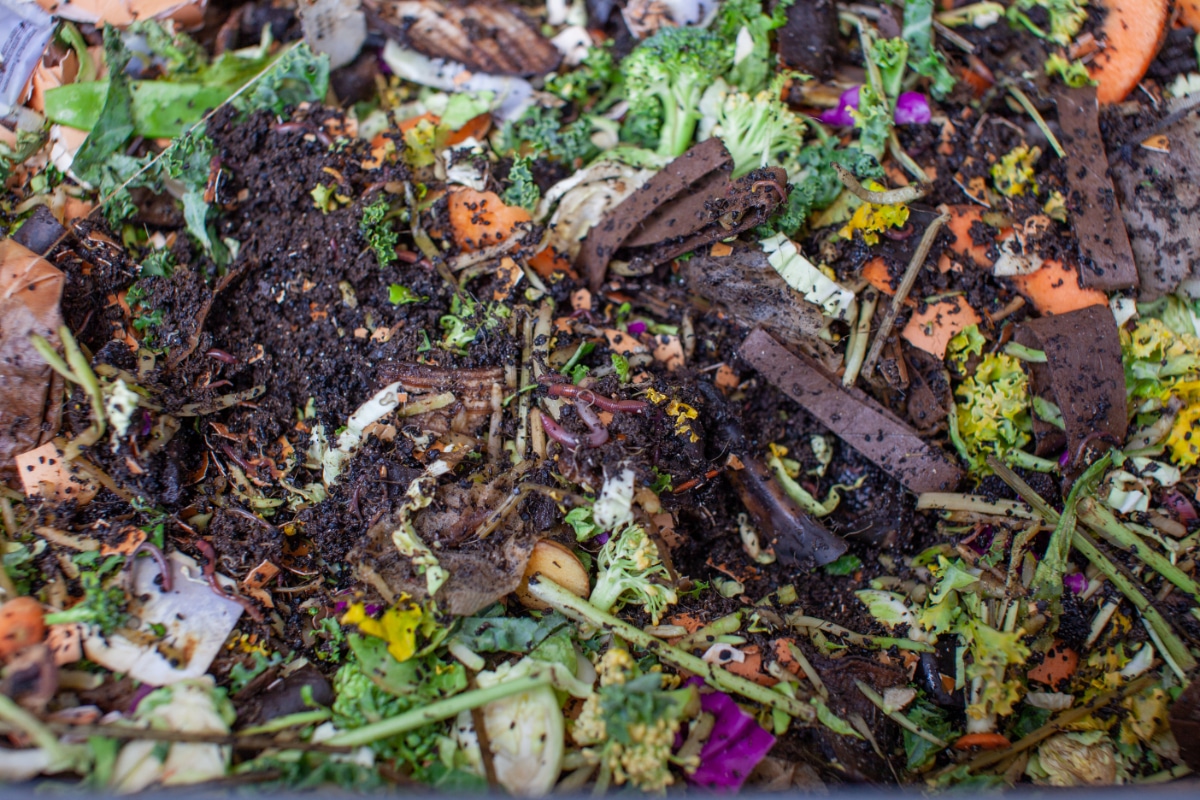
Coffee grounds are excellent, nutrient-rich food for worms. If you are into vermiculture, use your leftover grounds in your worm bin! Add one cup per week to the vermicompost bin.
If you are looking to increase worm populations in your traditional compost bin or in your garden, adding coffee grounds will help with that, too, because they attract earthworms.
Increase Soil Acidity
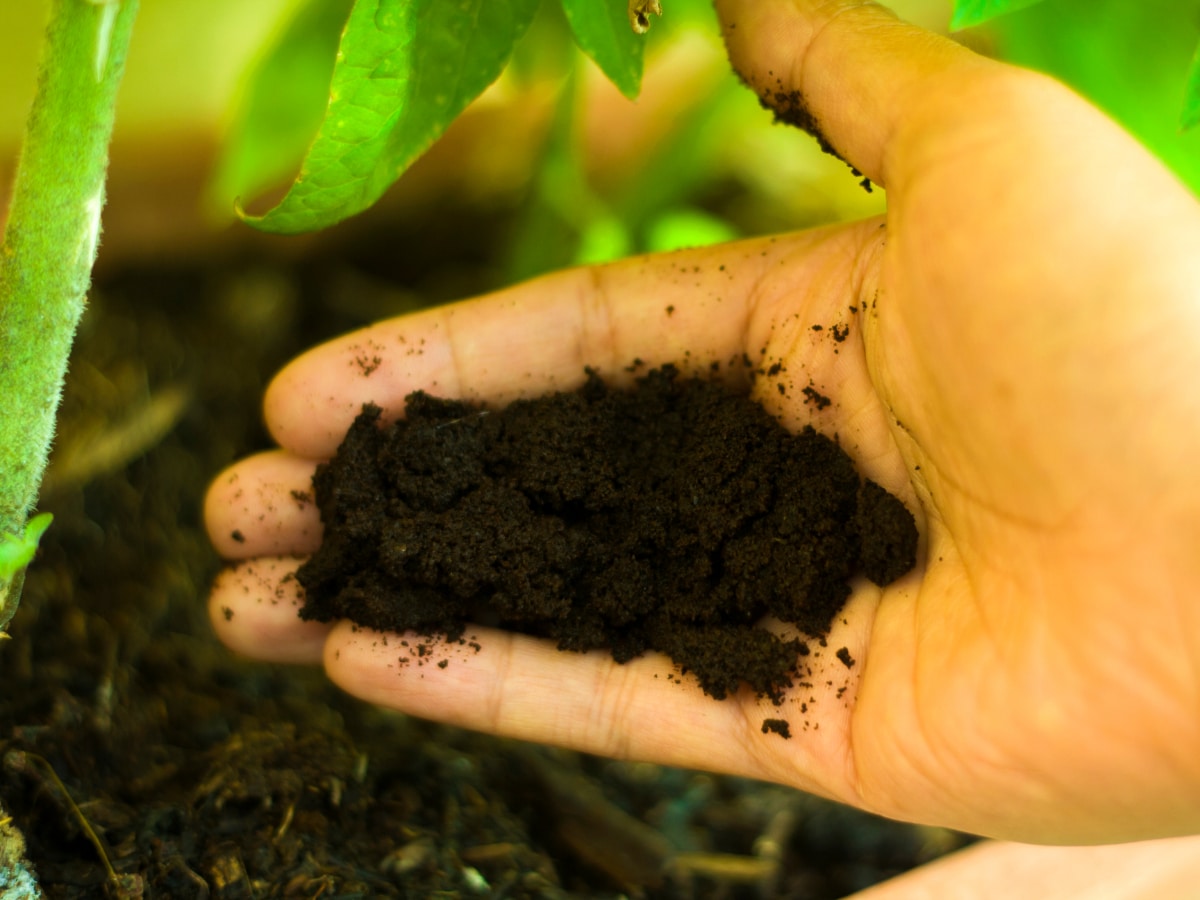
Coffee grounds can help increase soil acidity, but you will need to use unused grounds. The acidity of coffee grounds is greatly reduced when the grounds are brewed—the water simply washes the acid away. Once brewed, the pH of coffee grounds is almost neutral.
To increase soil pH with coffee grounds, broadcast a layer of unused grounds over the target area and work them into the soil, four to six inches down.
The acid from the grounds will break down with time so you may need to reapply regularly to keep the soil in the acidic range. A DIY home pH test using vinegar will give you a rough idea of whether your soil is acidic, or you can purchase a soil test kit.
While this use doesn’t recycle used grounds, it’s a great way to use up old coffee grounds or a roast or flavor that didn’t agree with you.
Influence Hydrangea Color
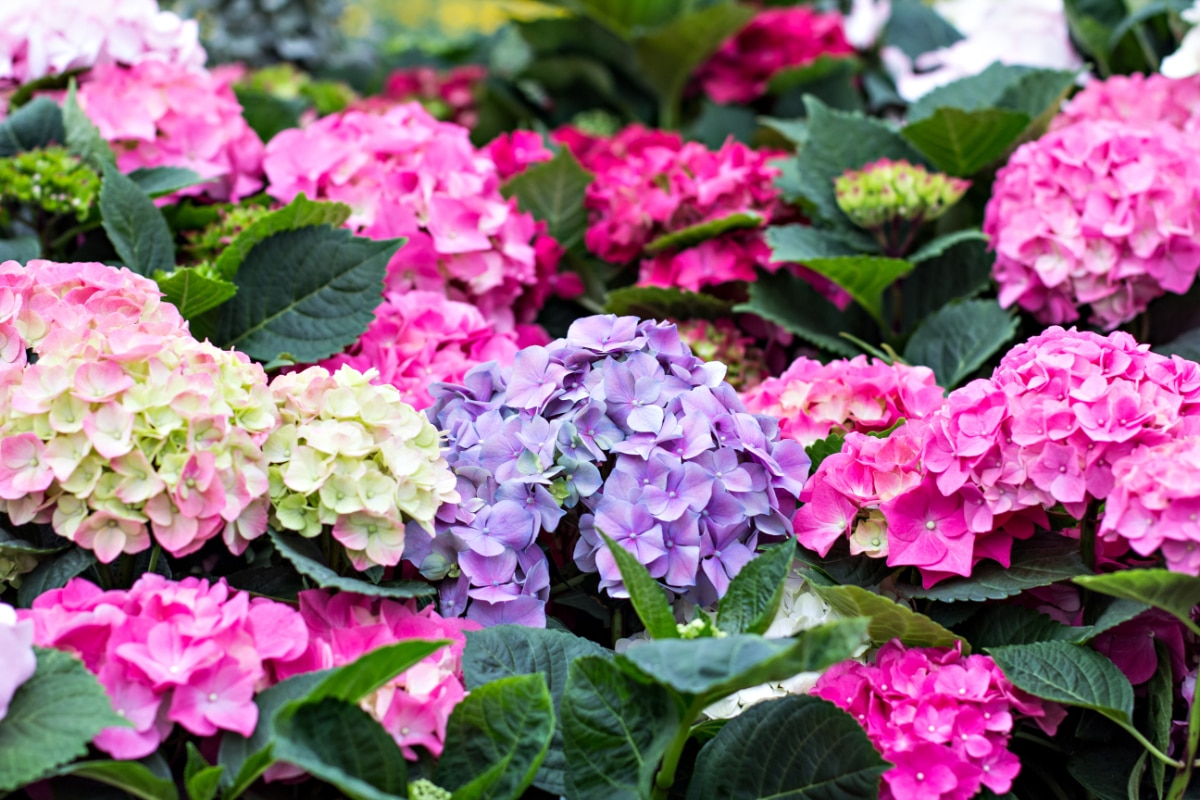
Ever wonder how people get such vibrant colors in their hydrangea blooms? The trick is in the soil’s pH. If you change the pH to acidic, you make aluminum in the soil available, and this in turn influences blossom color. The more acidic the soil your hydrangeas grow in, the bolder their colors will be.
Below is a range of pH levels that correspond to different hydrangea colors. You can test your soil to more accurately target blossom color, or you can experiment until you’ve reached the color you like most. The more coffee grounds you add, the darker and bolder the colors should be.
- For colored hydrangea blooms you will need a pH that is lower than 7
- For blue blossoms, aim for a pH of 5.5 or lower (acidic)
- For purple blooms or for a mix of blue and pink blossoms on the same bush, target a pH of 5.5 to 6.5 (slightly acidic)
- For pink hydrangeas, target a pH close to neutral—6.5 or above
Different varieties will vary in pH response, and white hydrangeas may not react at all, so this may take some experimentation to achieve the desired result, but it’s a fun way to bring more color to your garden!
Remember that you need to use unused coffee grounds for this purpose, and you need to work the grounds into the top several inches of soil.
Weed Control
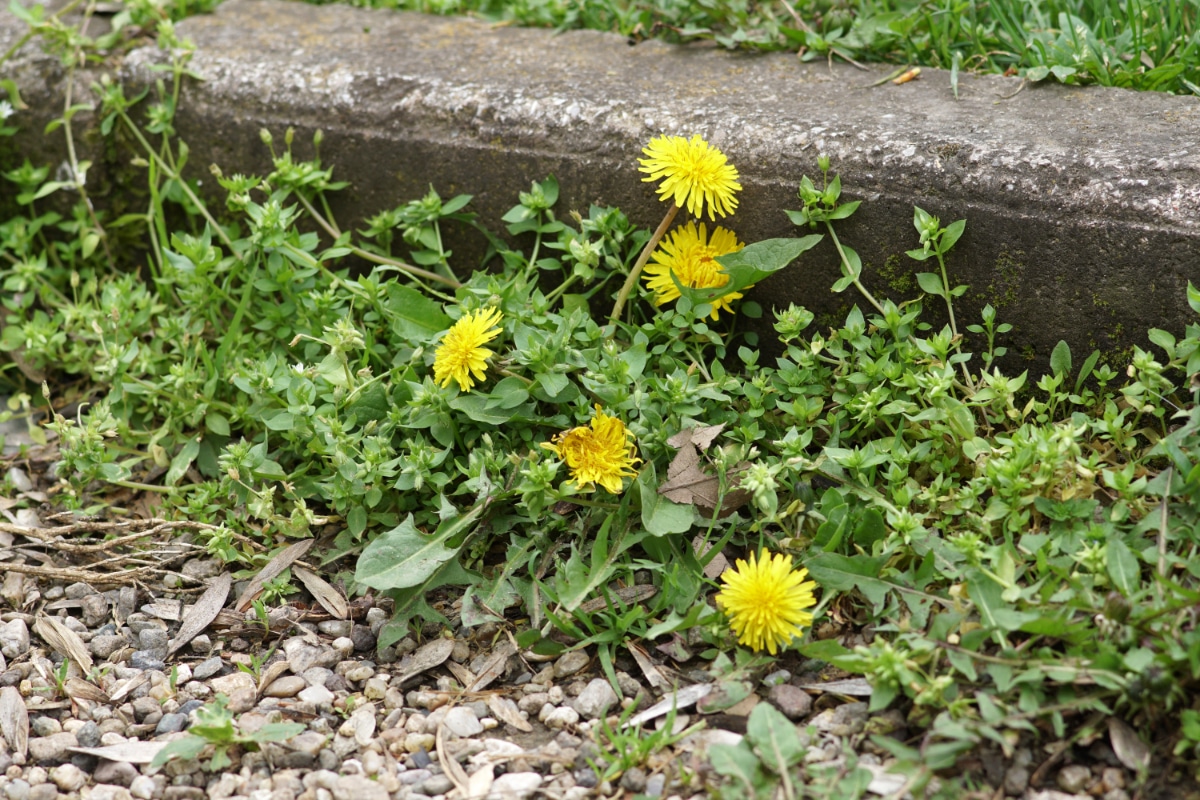
Coffee grounds have natural allelopathic properties, meaning that they inhibit the growth of some plants and weeds. They are able to prohibit germination and growth of some seeds. This is most effective on sprouting weed seeds and small seedlings.
It is important to note that the same effects can slow the growth of wanted flowers and vegetables, especially when young, so you may not want to use large amounts of coffee grounds as weed control around young plants, especially those that are direct-sown.
The best and safest way to use coffee grounds as garden weed control is to use them topically (on the surface of the soil) where they are less likely to negatively impact garden plants, and in combination with another mulch. Lay a layer of coffee grounds no more than ½ inch thick. Leave a buffer around the base of wanted plants so that water can get through to the plant’s roots. Top the layer with a thick layer of another type of mulch—sawdust or straw are good options.
Coffee Ground Pest Control
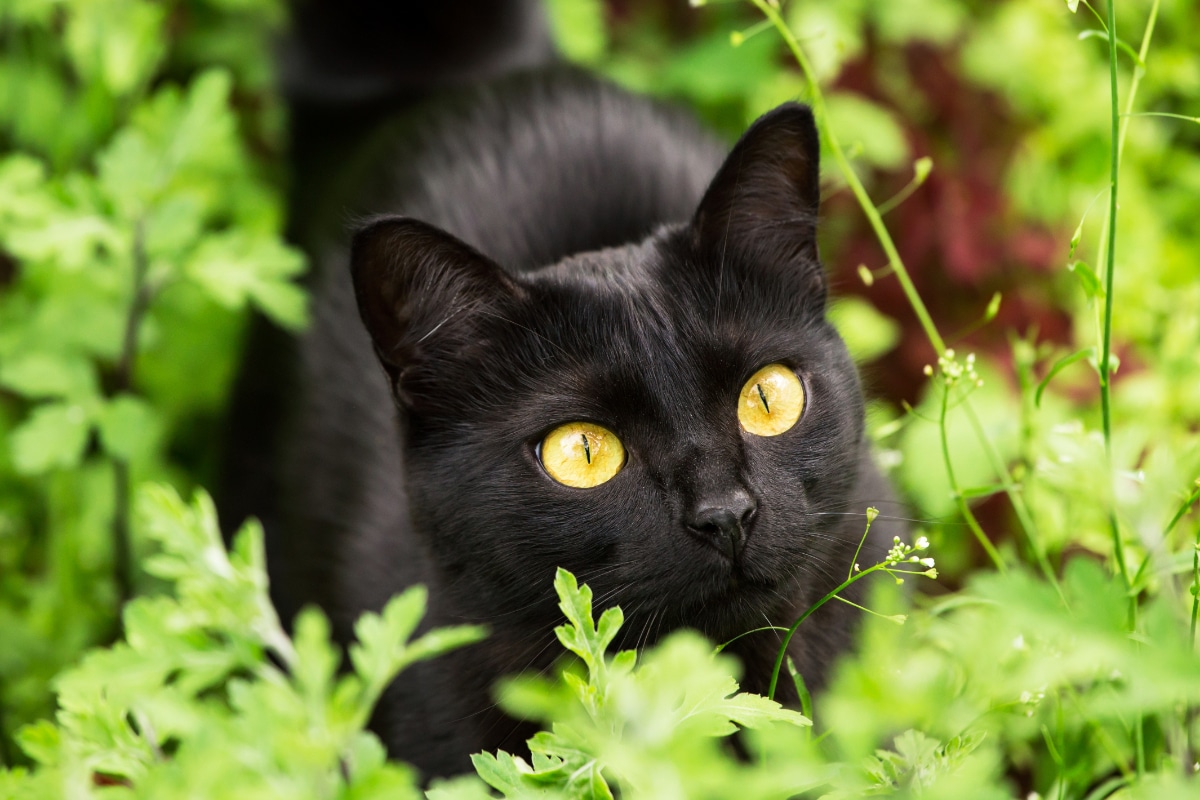
It turns out that coffee grounds are seriously off-putting to many common garden pests. Cats and rabbits avoid coffee out of a dislike of the smell and caffeine. To keep them out of your garden, sprinkle grounds liberally throughout garden walks, soil, and especially around the perimeter of your garden bed. Sprinkle over the top of container gardens to dissuade them from digging there.
Mosquitos, fruit flies, and beetles also avoid the scent of coffee. To repel flying insects, you can sprinkle the soil, leave bowls of spent grounds placed in problem areas or sitting areas, or use the “smudge” method: burn dried coffee grounds in a fire-safe bowl or clay pot and set them around target areas to drive bugs away. This can help keep your seating and dining areas enjoyably bug-free.
Slugs and snails are discouraged by both the smell of the grounds and the abrasiveness of dried grounds. Repel them by creating a circular barrier around target plants. The barrier should be at least a couple of inches wide. It is not advised to use this method around tomato plants, as they can sometimes be stunted by the coffee grounds.
A strong spray made from coffee is said to kill snails and slugs when sprayed directly on them. The brew needs to be very strong. Brew a very dark pot of coffee, three times as strong as what you would normally drink. Let cool and pour into a spray bottle. Spray directly on snails and slugs.
Fighting Bacterial and Fungal Disease
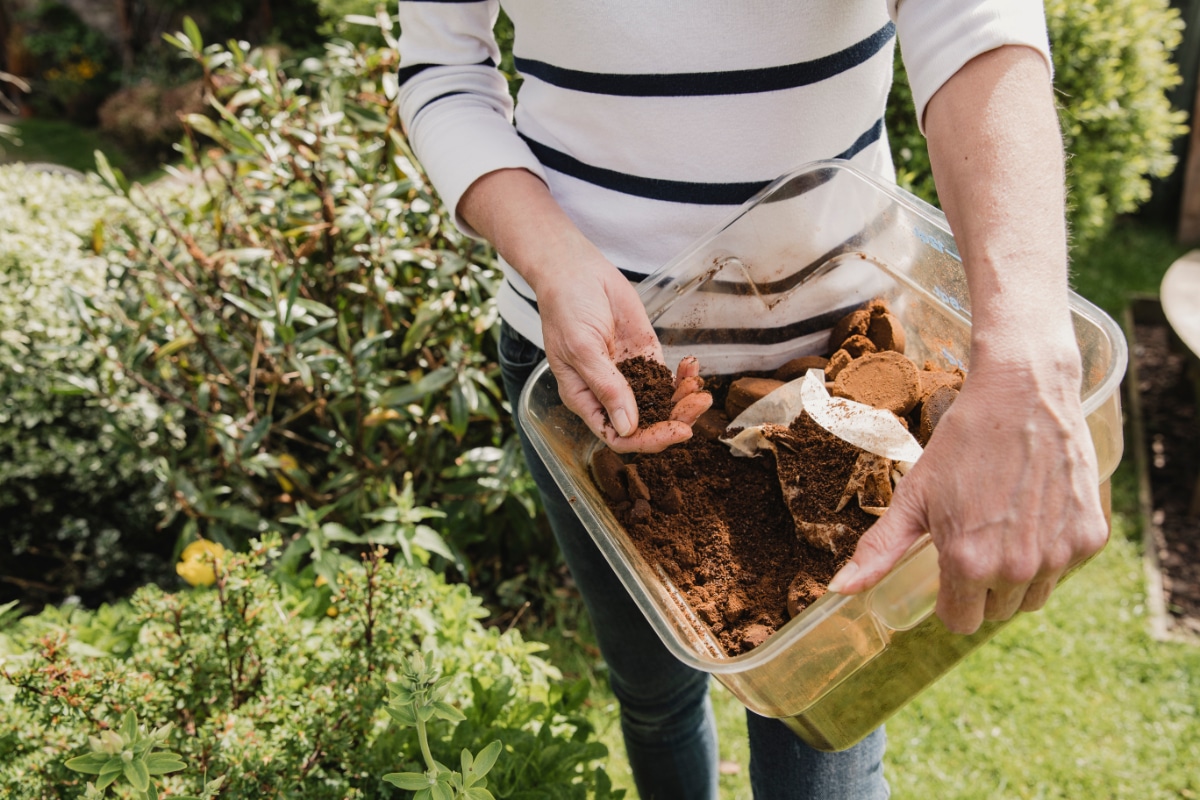
Coffee has naturally antibacterial and antifungal properties. It can be used in the control of such pathogens as Fusarium, Pythium, Sclerotinia, e. coli, and staphylococcus. It works by killing the spores and bacteria in the garden soil.
Application is easy—simply sprinkle grounds over the surface of your garden’s soil. For this use, fresh coffee grounds are best. It is better to do this at the end of a gardening season to kill spores before they over-winter, or early in the season prior to planting (apply three or four weeks ahead).
Use Coffee to Space Small Seeds like Carrots
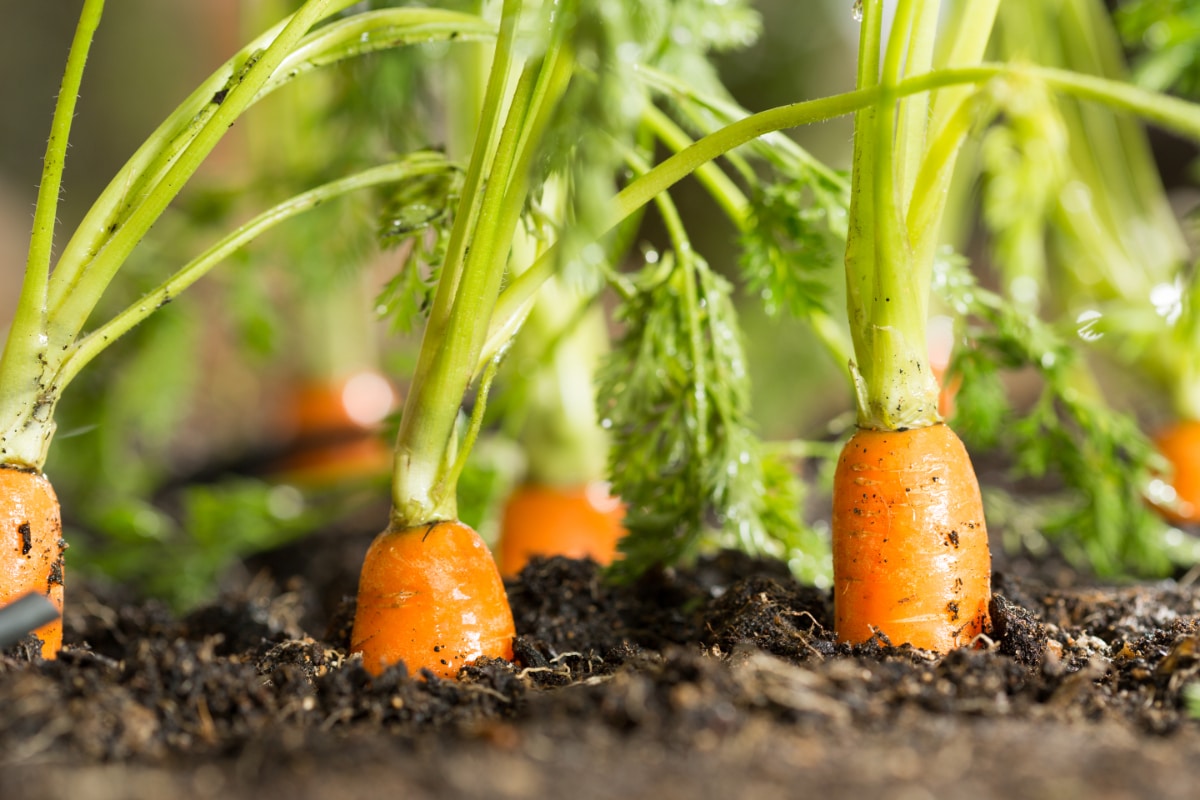
Cornell University recommends using used coffee grounds to improve the spacing of small seeds such as carrots. Added bulk helps in the distribution of the seed.
Mix grounds 1:1 with your packet of carrot seeds, then sprinkle in prepared rows. The grounds are also known for moisture retention. Consistent moisture is crucial to good carrot seed germination, so you may see germination rates improve with this method (do not, however, rely on the coffee grounds alone for adequate moisture and be sure to keep the row moist—do not let the top dry out).
Coffee Grounds to Keep Cut Flowers Fresh

Even after flowers are cut, they can still benefit from nutrients. When used in their water, the nitrogen in coffee can keep your fresh cut arrangements looking beautiful for quite some time.
Stir one tablespoon of used coffee grounds into each vase of cut flowers. If you prefer not to look at the grounds in the vase, you can steep the grounds in the water overnight and strain the grounds out of the water before using. Change the coffee water every one or two days for best results.
Mulching Paths and Walkways with Used Coffee Grounds
Coffee grounds do not make a great stand-alone mulch in the garden because if they are applied too heavily, they can create a sort of hard shell that keeps water and air from permeating the soil. Along garden paths and walkways, though, that’s not much of a concern. Coffee grounds are good to use between pavers and rocks for mulching and weed control.
Grow Greener Grass with Coffee Grounds
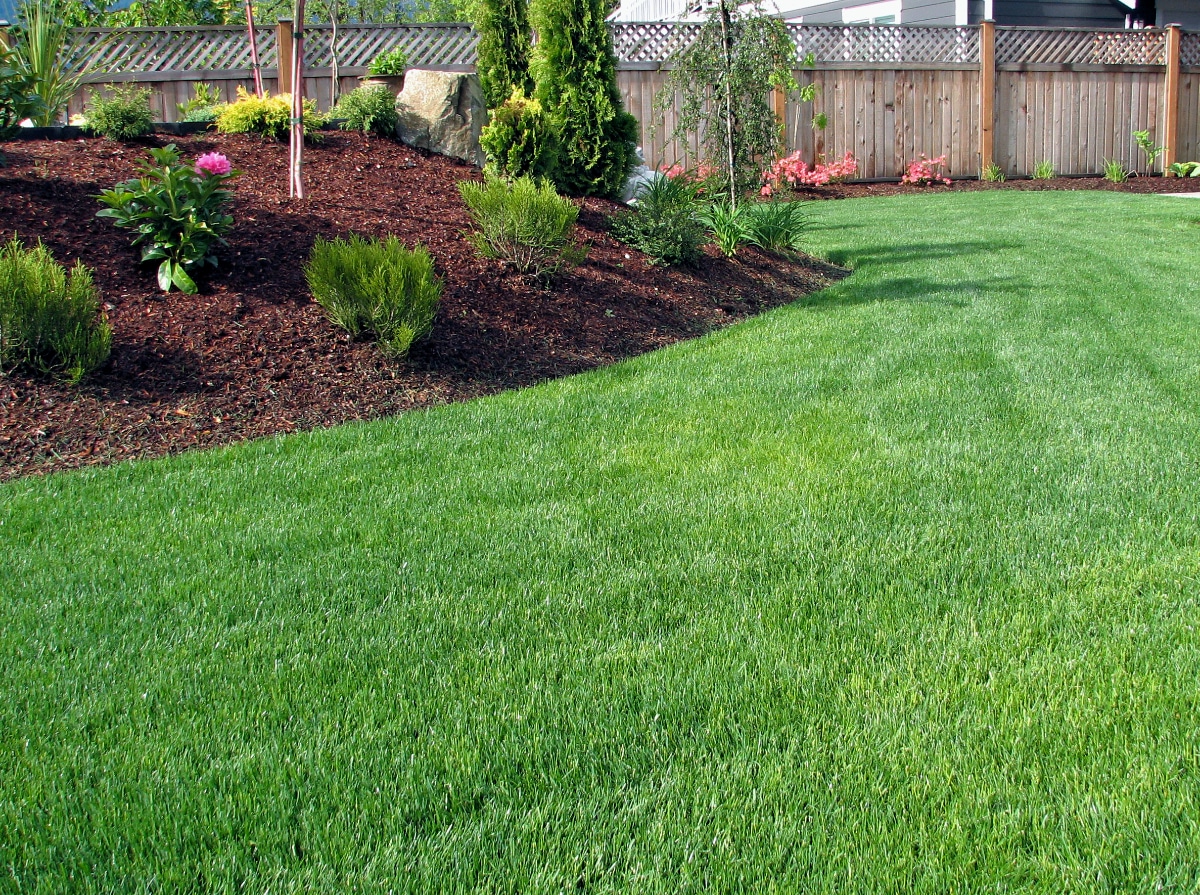
Coffee’s nutrients are excellent for greening up grasses. What’s better, coffee is cheap (free!), easy, and harmless to apply. For this purpose, you should use used coffee grounds.
One way to apply coffee grounds for greening grass is to simply broadcast the grounds around your lawn. Rake to distribute any clumps so that you do not smother grasses or create an impermeable shell.
Another easy way to use coffee to build up your lawn is to make a tea from the grounds and then use it to water your lawn. Soak one-half pound of used coffee grounds in a five-gallon pail of water overnight. Leave the grounds in the water and then use the mixture to water your lawn.
Over time the coffee grounds will compost into your lawn and can help improve your lawn’s soil.
Stronger grass will be greener and more vibrant, but will also create a better turf, more capable of choking out weeds and unsightly competing plant invaders.
Garden Furniture Scratch Repair
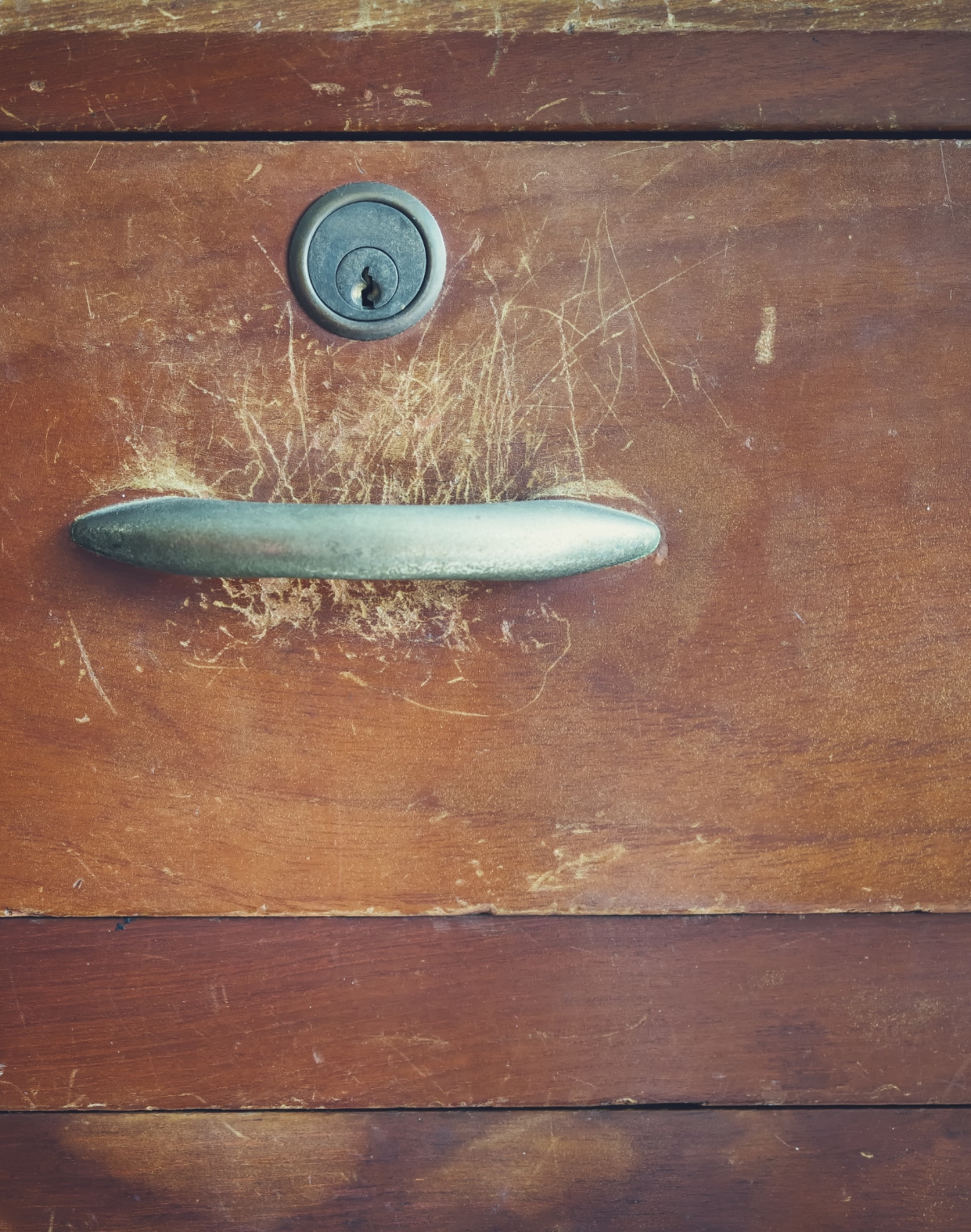
You can use coffee grounds as a light scrub to clean garden furniture, or as a scratch repair for dark wood outdoor furniture.
To use, make a thick paste of coffee and water—four parts coffee, one part water.
Using a rag, rub the paste into scratches and over the surface of the furniture. Let sit for ten minutes.
Wipe the paste from the furniture. Let dry. If grounds remain, they can be sprayed off later. Repeat if necessary for a darker effect.
You can use this paste to buff scratches out of dark wood furniture. Just be aware that the natural dye and staining of the coffee grounds is what helps to cover the damage, so you will probably not want to use any coffee-based cleaner or paste on any light pieces, and you may want to spot-test the paste in an inconspicuous area prior to use.
Cleaning Garden Pots and Tools with Coffee
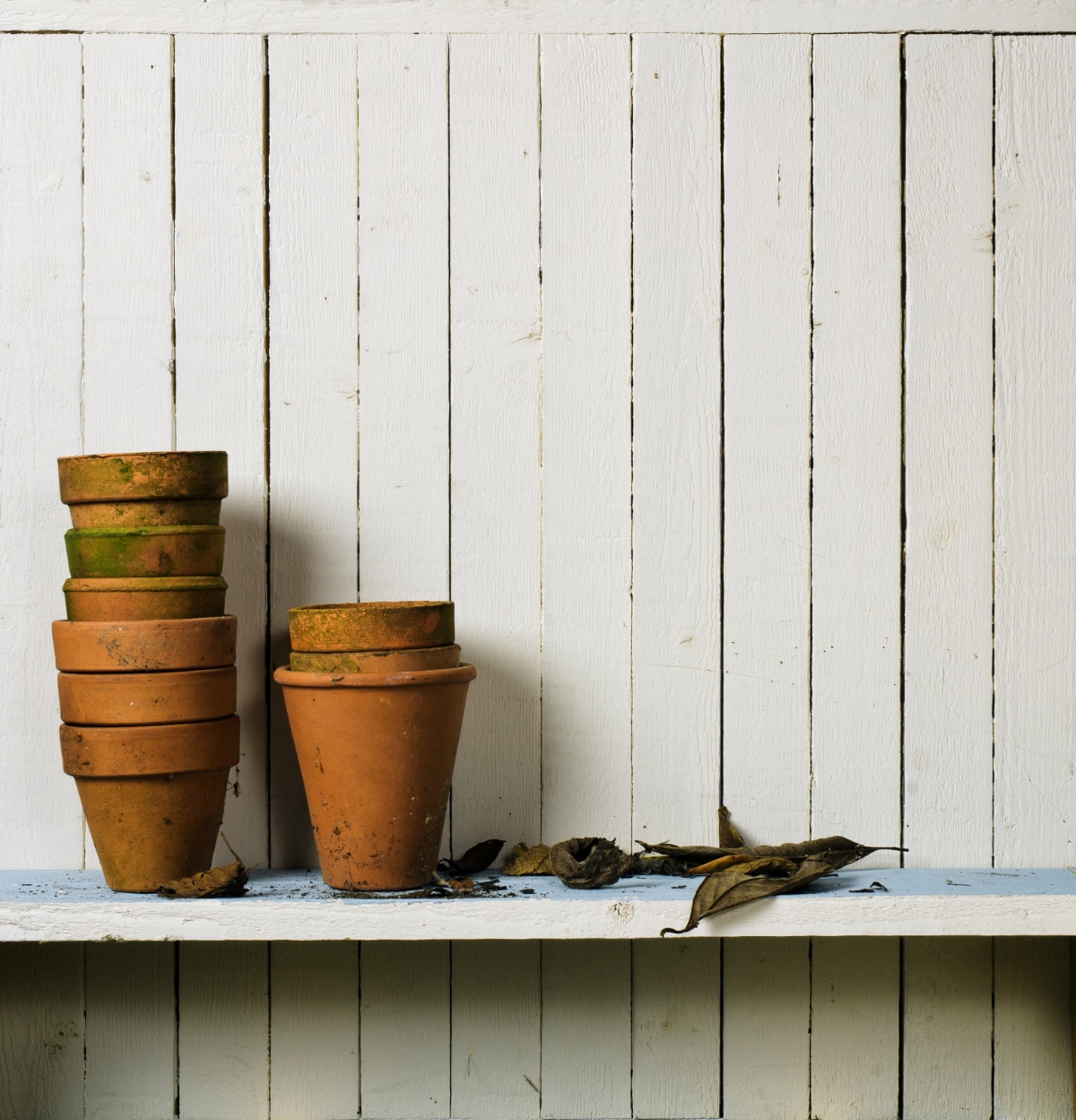
Coffee grounds are also good for cleaning all sorts of garden pots and tools. Make a paste-like you would for cleaning furniture, or simply sprinkle used coffee grounds generously over the surface and scrub with a stiff brush or wet rag (one that you don’t mind turning brown), then rinse clean. The mild abrasiveness of the grounds will help scrub away tough, caked-on material.
Since the coffee is naturally antimicrobial and antifungal, it will help to disinfect your pots and tools, too.
Coffee Hand and Skin Cleaner and Odor Eliminator
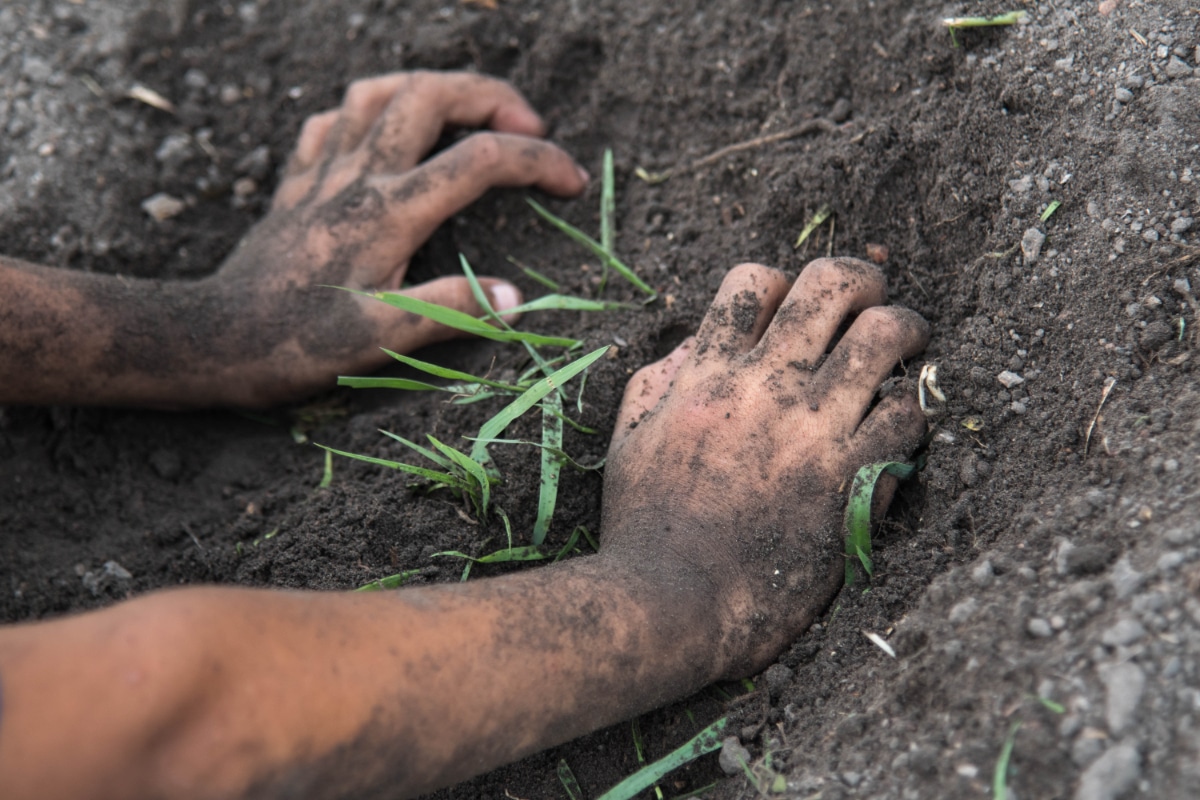
Lest you forget yourself, coffee is a great garden hand and skin cleaner for you, too! You, too, can benefit from its antimicrobial/antifungal action. Simply use a small amount of coffee grounds to scrub your hands when you come in from the garden to remove dirt and stains.
To make a gentle exfoliator, mix used grounds with a small amount of moisturizing coconut oil or water. Mix them with honey for a food-safe, gentle treatment and exfoliator for weathered, sun-beaten lips.
What’s even better, coffee excels at eliminating nasty odors. So, the same simple scrub can be used to eliminate any of the nasty smells you might collect in your gardening ventures—such as pruning smelly plants (tomatoes) or cooking and chopping stinky vegetables like garlic and onions.
A Few Tips and Cautions When Using Coffee Grounds in the Garden

It’s always wise to be aware of any downsides to using a product, even one as natural and as relatively harmless as coffee grounds. It’s handy to know the tips and tricks that go along with its use, too.
One thing to know, that has been mentioned but is worth reminding, is that used coffee grounds are not really acidic. Fresh, unused grounds do contain acid, but that acidity is washed away with brewing. Once rinsed or used, the pH of coffee is nearly neutral.
Very importantly, do not apply coffee grounds too heavily on the surface of your garden soil. When used in abundance, the tiny grounds kind of “weld” together and create a crust on the surface. This can make it very hard for water to penetrate the soil, causing it to run off instead. It also restricts air and oxygen flow through into the soil. Both of these are critical to plant life.
Some trials testing coffee ground use in gardens show that certain plants do not always react favorably to the grounds, and in some cases, the grounds appeared to limit plant performance. These included tomatoes, leeks, radishes, sunflowers, broccoli, asparagus, geraniums, and viola (the effects may not be limited to just these plants). When using coffee in your garden, it is wise to start sparingly, watch how your plants react, and then make a judgment before increasing use.
The stunting and slow growth that can occur with coffee ground use are more of an issue for sprouts and young seedlings. It may be wise to wait until your plants are well established before applying significant amounts of coffee grounds near to them.
Decaffeinated coffee grounds are an even more sure bet for sensitive plants. Some plants are actually sensitive to caffeine and can be adversely affected. If you feel like coffee grounds are adversely affecting your plants, try switching to decaf. Don’t be shy about using decaf grounds, and if you have a good source of them, use them!
Sourcing Coffee Grounds for Your Garden
Your own kitchen and coffee waste is the first place from which to source your grounds. Lay the grounds out to dry, then add them to an ongoing bowl or storage container. They will store well and should remain mold-free as long as they are not wet when they go into your container. Alternatively, you can keep a large baggie or bowl in your freezer and add to it daily until you have enough to use.
If you use a Keurig-type or pod-style single-serve machine, remove the foil top after brewing, and dump the grounds into your bulk container. The cups can be rinsed and saved to use for starting seedlings indoors.
You can also ask friends and family to save their used grounds for recycling in your garden.
Finally, ask around at your local coffee shop, café, or diner. The more waste you can take off their hands, the lower their waste disposal costs, so many are willing to save them for you. Some chain coffee shops even have programs for just this purpose—Starbucks has been offering free used coffee grounds to gardeners via their “Grounds for your Garden” program since 1995.

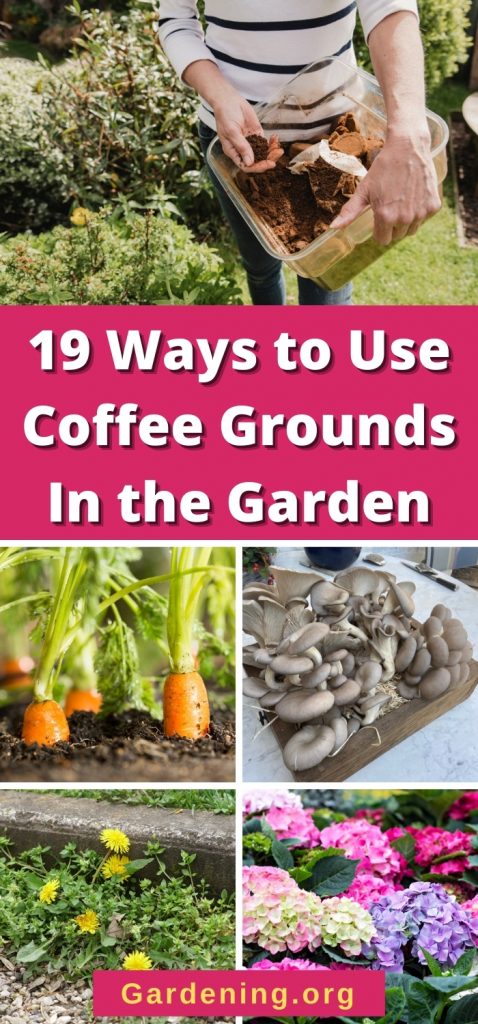
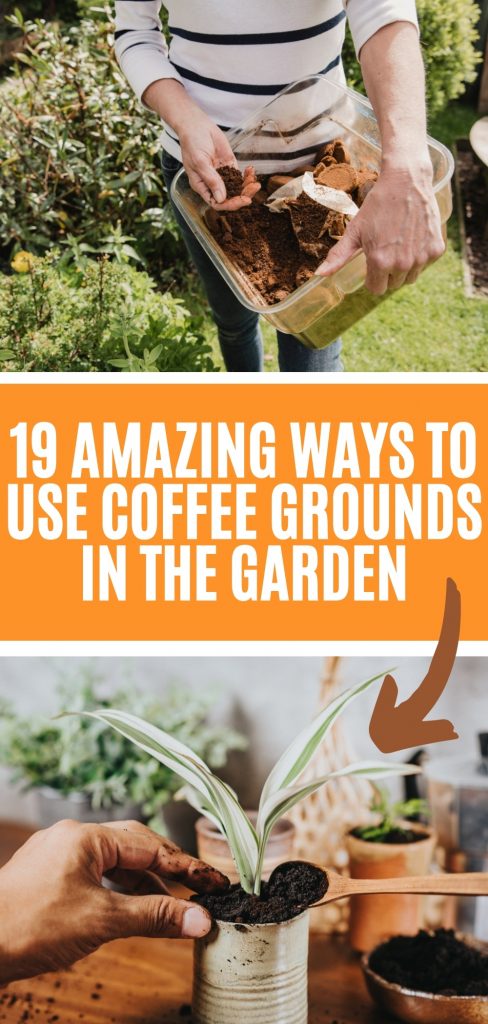




D. Williams
Wow what a fascinating and informative article. I am up for using coffee grounds and will start sorting them straight away - we usually just pop them in the compost bin. Looking forward to using them in different ways in my garden
Cathy Collison
Used coffee grounds are very acidic. One flawed experiment seems to have taken over the internet. I collect 5 gallon buckets of coffee grounds from local coffee shops and mix it with sawdust from a local furniture maker 5 parts grounds to 1 part sawdust. The end result is loaded with worms and mycelium, and NPK of 20 20 20.
Mary Ward
According to leading universities, this is not the case.
https://today.oregonstate.edu/archives/2008/jul/coffee-grounds-perk-compost-pile-nitrogen#
https://s3.wp.wsu.edu/uploads/sites/403/2015/03/coffee-grounds.pdf
https://extension.arizona.edu/using-coffee-grounds-garden